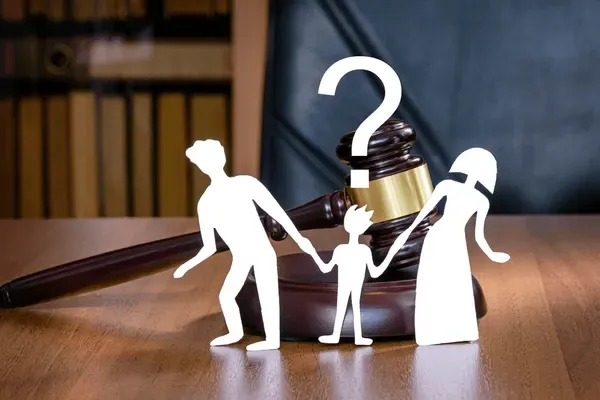What Should Parents Know about Child Custody in North Carolina?
Navigating child custody arrangements can be one of the most challenging aspects of a separation or divorce. In North Carolina, the legal framework for child custody is designed to prioritize the best interests of the child, but understanding the different types of custody arrangements can be complex. This guide aims to shed light on the types of child custody in North Carolina, helping parents make informed decisions.

By approaching custody decisions with a focus on cooperation and the child’s needs, parents can create a positive environment that fosters healthy relationships and supports the child’s development through the challenges of family change. Let’s dive in.
Types of Child Custody in North Carolina
In North Carolina, child custody is divided into two primary categories: legal custody and physical custody. Each category can be further divided into different types of arrangements. Here’s a closer look:
Physical Custody
Physical custody determines where the child resides and how much time they will spend with each parent. Physical custody can be categorized as:
- Sole Physical Custody: The child primarily resides with one parent, and the other parent may have limited or supervised visitation, or none at all, depending on the court’s decision. In this arrangement, the non-custodial parent has minimal involvement in the child’s day-to-day life.
- Primary and Secondary Physical Custody: The child resides mainly with one parent (the primary custodial parent) who handles their daily care. However, the other parent (with secondary physical custody) has regular, scheduled visitation rights, which allows for more frequent and structured involvement in the child’s life, such as weekend or holiday visitations.
- Joint Physical Custody: The child’s time is divided more evenly between both parents, which can range from one parent having primary custody with the other parent having scheduled visitations to an equal split between both parents.
Legal Custody
Legal custody refers to the right and responsibility of a parent or both parents, to make important decisions about a child’s life, including those related to education, healthcare, religious upbringing, and general welfare.
- Sole Legal Custody: If one parent has sole legal custody, they have the ultimate decision-making authority regarding significant aspects of the child’s life, such as education, healthcare, and religious upbringing, without requiring input from the other parent.
- Joint Legal Custody: Joint legal custody requires both parents to collaborate on major decisions regarding their child’s life, such as schooling or medical care. This arrangement is preferred because it keeps both parents involved in key aspects of the child’s upbringing. For example, if one parent cannot be reached during an emergency or an important situation, the parent who is currently caring for the child must have the ability to make decisions quickly to ensure the child’s safety, health and well-being without waiting for the other parent’s input. This ensures the child’s needs are met without unnecessary delays.
Sole Legal and Physical Custody:
Sole legal and physical custody is generally only granted when there is a substantial showing that joint custody would not serve the child’s best interests. This might occur when one parent is unfit due to factors like abuse, neglect, substance abuse, or other circumstances that could jeopardize the child’s well-being.
Visitation Rights
In cases where one parent does not have physical custody, the court may grant visitation rights to ensure that the non-custodial parent maintains a relationship with the child. Visitation can be:
- Scheduled Visitation: A predetermined schedule that outlines when the child will spend time with the non-custodial parent. This can include weekends, holidays, and school vacations.
Supervised Visitation: Visitation that takes place under the supervision of a third party. This is often required in situations where there are concerns about the child’s safety or well-being during visitation.
Temporary Custody
During divorce or separation proceedings, temporary custody arrangements may be put in place until a final custody order is determined. These temporary arrangements are designed to provide stability for the child while the court considers the permanent custody arrangement.
How Custody Decisions Are Made
In North Carolina, custody decisions are guided by the principle of the child’s best interests. The court considers various factors, including:
- The child’s age and developmental needs
- Each parent’s ability to provide a stable and loving environment
- The child’s relationship with each parent
- The safety of the child
- Any history of domestic violence or substance abuse
Additionally, the court may consider the child’s wishes when determining custody, but there is no set age where their preference automatically dictates the outcome. The court will evaluate the child’s maturity and the circumstances on a case-by-case basis.
Mediation Requirement:
In New Hanover, Brunswick, and Pender Counties, mediation is required for initial or modified custody cases before going to trial (unless domestic violence is involved). This mediation is for parents to work through custody issues without attorneys. At Russell Family Law & Litigation, we guide you through this process, ensuring you understand each step and are well-prepared to reach the best outcome for your family.
Conclusion
The court will always prioritize the child’s best interests when making decisions regarding both legal and physical custody. Understanding the types of child custody in North Carolina can help parents navigate the complexities of family law and make informed decisions that prioritize their child’s well-being. Whether you are seeking primary custody, joint custody, or visitation rights, it’s essential to consider the unique needs of your child and work towards a solution that supports their best interests. Russell Family Law & Litigation can provide additional guidance tailored to your specific situation.
When navigating the complexities of family law, especially during a divorce, it’s vital to understand the nuances of talking to children about divorce. Our guide on what parents should know about child custody in North Carolina offers essential information that can help you approach this sensitive topic.











